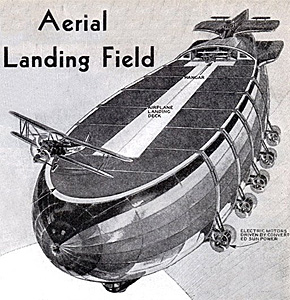Two vivid images immediately come to mind when the word dirigible is thrown out in conversation – the blue and yellow Goodyear blimp flying over sporting events and the blazing crash of the Hindenburg.

While the blimp acting as skycam is affiiliated with stadiums filled with fans and Super Bowls, we all recall the quote that is associated with the horrifying newsreel footage of the Hindenburg disaster. As the flames engulf the ship and passengers leap several stories to escape the fire, one of the newsmen covering the luxury airliner’s arrival stateside cries out in a haunted voice, “Oh, the humanity!”
However, there’s a lot more to airships than those two examples.
The big balloon-like flying ships played a role in World War I. Their military applications included flying as spies in the sky and bombers. They were also used in some fanciful science fiction and stretched the imagination and creativity of both engineers and writers.
The scale of the airships got bigger and bigger as militaries began to use them as transport ships. The U.S. military built dirigibles large enough to carry up to five airplanes. Plans were drawn for ships on such a huge scale that they could carry as many as 22 planes. One fanciful designer came up with a dirigible from which planes could take off and land like the Navy’s aircraft carriers of today.
The giant slow-moving craft captured the nation’s attention as luxury liners on a par with the Titanic. Images of the airships soaring over New York were commonplace in newspapers and newsreels bringing thoughts of glamorous travel to the masses.
Dirigibles are still in construction today with more aerodynamic designs than the simple balloon shape. Some utilize nature as a source for inspiration. The video below shows an example based on the manta ray.
For a rundown of airships both fanciful and practical head to Dark Roasted Blend.
Tags: dirigible, airship, zeppelin, Hindenburg







